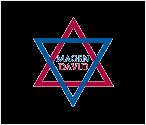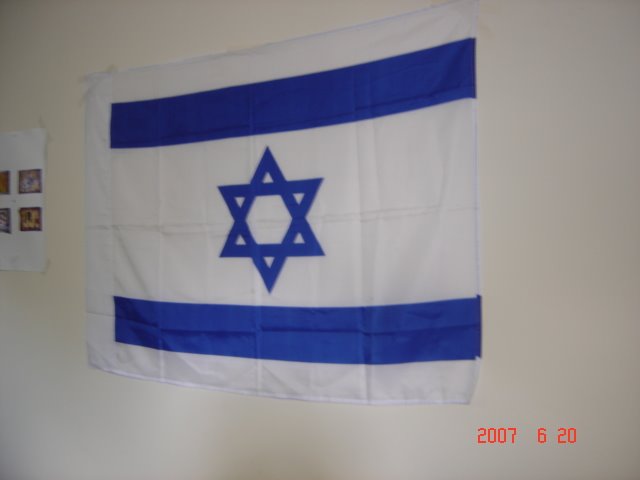Tuesday, August 22, 2006
Parashá Shoftim
Rabino Aron Tendler
Note: The Shabbos Torah Reading is divided into 7 sections. Each section is called an Aliya [literally: Go up] since for each Aliya, one person "goes up" to make a bracha [blessing] on the Torah Reading.
---------------------------------------------------------------------------
1st and 2nd Aliyot: Moshe details the most important characteristics of a Judge: the ability to remain objective and the strength to refuse bribery. The singular focus of the Shofet must be to carry out the will of G-d as detailed in the Halacha. Nothing must deter him in carrying out his mission of justice.
Idolatrous practices must be eradicated and punished. Idol worship represents the greatest perversion of justice by replacing divine justice with human failings and desires.
The Sanhedrin is our direct link with divine intent, and as stated in Pasuk 17:11, we view the rulings and interpretations of the Supreme Court as G-dly directives.
Our Monarch must be selected for his unyielding commitment to G-d, Torah, and the people. This is why he must write his own Sefer Torah and carry it with him at all times. He must be first and foremost a Shofet, a Judge.
3rd and 4th Aliyot: Moshe again addressed the place of the tribe of Levi,reemphasizing the care and attention due to them by the rest of the nation. They are our teachers. Without their instruction we will neither understand or be able to properly apply justice.
5th Aliya:For justice to exist, it must be accepted as a divine ruling.Only G-d's justice can be trusted to take into account all variables and possibilities. Moshe instructed his nation regarding the true Navi - prophet and the false prophet. No other forms of divination can be used to ascertain G-d's justice, and all false prophets and methods of divination must be destroyed. The value of human life is determined by our system of justice, and Moshe reviewed the laws of the unintentional killing in contrast with the intentional murder.
6th, and 7th Aliyot: The end of Parshas Shoftim discusses both proper and falsewitnesses, as well as the Torah's approach to warfare. It may be that the judicial quality of a nation can be ultimately assessed by its behavior during war, more so than during times of peace.
The Parsha concludes with the unique mitzvah of the Eglah Arufa and the process through which the community takes responsibility for the unsolved murders. This ceremony, which reflects the priceless value of life, might be the most eloquent expression of G-d's judicial system.
---------------------------------------------------------------------------
Haftorah Shoftim
Isaiah 51:12-52:12
G-d, speaking through Yishayuhu the Navi, contrasts the situation of Israel while in exile to the way things will be at the time of Her redemption. In many ways it continues the Parsha's theme of justice. "...Behold I took from you the cup of weakness... and I will place it into the hand of those who cause you to wander..." (51:22-23) Ultimately, Israel will be returned to the Land and our oppressors will be punished.
In the last section of the Haftorah (52:7-9) the Navi prophesies the coming of Eliyahu Hanavi who will herald the arrival of Mashiach and the rebuilding of Yeruyshalayim. "How beautiful are the feet of the herald on the mountains announcing peace, heralding good tidings, announcing salvation..."
Our soon to be announced redemption is the greatest consolation that G-d could offer his children.
Note: The Shabbos Torah Reading is divided into 7 sections. Each section is called an Aliya [literally: Go up] since for each Aliya, one person "goes up" to make a bracha [blessing] on the Torah Reading.
---------------------------------------------------------------------------
1st and 2nd Aliyot: Moshe details the most important characteristics of a Judge: the ability to remain objective and the strength to refuse bribery. The singular focus of the Shofet must be to carry out the will of G-d as detailed in the Halacha. Nothing must deter him in carrying out his mission of justice.
Idolatrous practices must be eradicated and punished. Idol worship represents the greatest perversion of justice by replacing divine justice with human failings and desires.
The Sanhedrin is our direct link with divine intent, and as stated in Pasuk 17:11, we view the rulings and interpretations of the Supreme Court as G-dly directives.
Our Monarch must be selected for his unyielding commitment to G-d, Torah, and the people. This is why he must write his own Sefer Torah and carry it with him at all times. He must be first and foremost a Shofet, a Judge.
3rd and 4th Aliyot: Moshe again addressed the place of the tribe of Levi,reemphasizing the care and attention due to them by the rest of the nation. They are our teachers. Without their instruction we will neither understand or be able to properly apply justice.
5th Aliya:For justice to exist, it must be accepted as a divine ruling.Only G-d's justice can be trusted to take into account all variables and possibilities. Moshe instructed his nation regarding the true Navi - prophet and the false prophet. No other forms of divination can be used to ascertain G-d's justice, and all false prophets and methods of divination must be destroyed. The value of human life is determined by our system of justice, and Moshe reviewed the laws of the unintentional killing in contrast with the intentional murder.
6th, and 7th Aliyot: The end of Parshas Shoftim discusses both proper and falsewitnesses, as well as the Torah's approach to warfare. It may be that the judicial quality of a nation can be ultimately assessed by its behavior during war, more so than during times of peace.
The Parsha concludes with the unique mitzvah of the Eglah Arufa and the process through which the community takes responsibility for the unsolved murders. This ceremony, which reflects the priceless value of life, might be the most eloquent expression of G-d's judicial system.
---------------------------------------------------------------------------
Haftorah Shoftim
Isaiah 51:12-52:12
G-d, speaking through Yishayuhu the Navi, contrasts the situation of Israel while in exile to the way things will be at the time of Her redemption. In many ways it continues the Parsha's theme of justice. "...Behold I took from you the cup of weakness... and I will place it into the hand of those who cause you to wander..." (51:22-23) Ultimately, Israel will be returned to the Land and our oppressors will be punished.
In the last section of the Haftorah (52:7-9) the Navi prophesies the coming of Eliyahu Hanavi who will herald the arrival of Mashiach and the rebuilding of Yeruyshalayim. "How beautiful are the feet of the herald on the mountains announcing peace, heralding good tidings, announcing salvation..."
Our soon to be announced redemption is the greatest consolation that G-d could offer his children.




